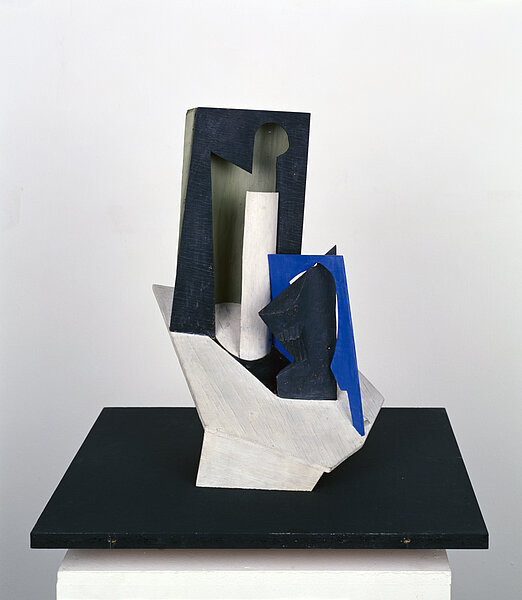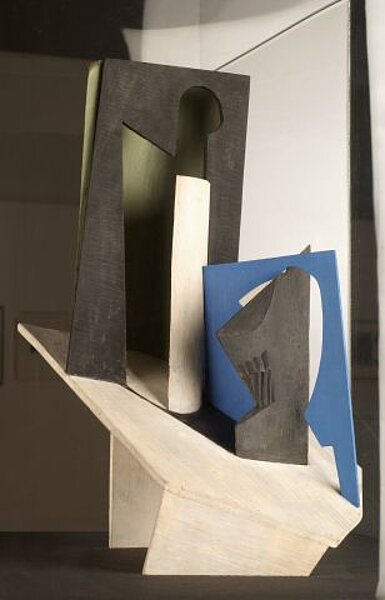
Laurens, Henri
Bouteille et verre
Bottle and Glass
1918
| Object description | Sheet metal, paint, wood |
|---|---|
| Object category | sculpture |
| Material | |
| Technique |
object:
construction
|
| Dimensions |
object size:
height: 49 cm,
width: 22 cm,
depth: 30 cm,
height: 65,5 cm
acrylic glass camber:
width: 56,5 cm,
depth: 56,5 cm
plinth:
height: 120 cm,
width: 60 cm,
depth: 60 cm
circular cut-out:
diameter: 9,5 cm
Object with wooden plate:
height: 52 cm,
width: 55 cm,
depth: 55 cm
object:
weight: 13 kg
|
| Year of acquisition | 1966 |
| Inventory number | P 61/0 |
| Creditline | mumok - Museum moderner Kunst Stiftung Ludwig Wien |
| Rights reference | Bildrecht, Wien |
| Further information about the person | Laurens, Henri [GND] |
| Literature |
Henri Laurens.Wellentöchter Genau und anders :Mathematik in der Kunst von Dürer bis Sol LeWitt Museum moderner Kunst Stiftung Ludwig Wien Laboratorium Moderne/Bildende Kunst, Fotografie und Film im Aufbruch Augenschmaus.Vom Essen im Stillleben Tête-á-Tête LEGER LAURENS ALBERTO GIACOMETTI.Pionier der Moderne/Modernist Pioneer |
Inspired by his friendship with Georges Braque and Pablo Picasso the sculptor Henri Laurens creates the preconditions for a new definition of sculpture, its contents, objects and design. Up to 1920 his output contains cubist constructions of painted wood and metal including “Glass and Bottle”. The size of the object contradicts what we know about the bottle and the glass, the theme is transformed into a many colored construction which refuses to bow to the illusionist reproduction of reality. Assembled from a series of many layered small forms the figure reads like a repertoire of abstract signs which take possession of space and make it their own. On closer examination the signs are beginning to reify. Cavities and negative forms evoke the bottle, the glass is formed by two intersecting wooden components stabilizing and dynamizing elements open enclosed forms hold a dialogue which takes the theme of glass and bottle as the initial impetus for the appraisal of three dimensionality and volume. „I compose my forms and create rhythm by way of balances or opposites in directions and dimensions which are suited to contribute to the intensity of depiction, in view also of the works in alive. In other words: I seek to create and not to imitate or interpret.“
© mumok – museum moderner kunst stiftung ludwig wien

